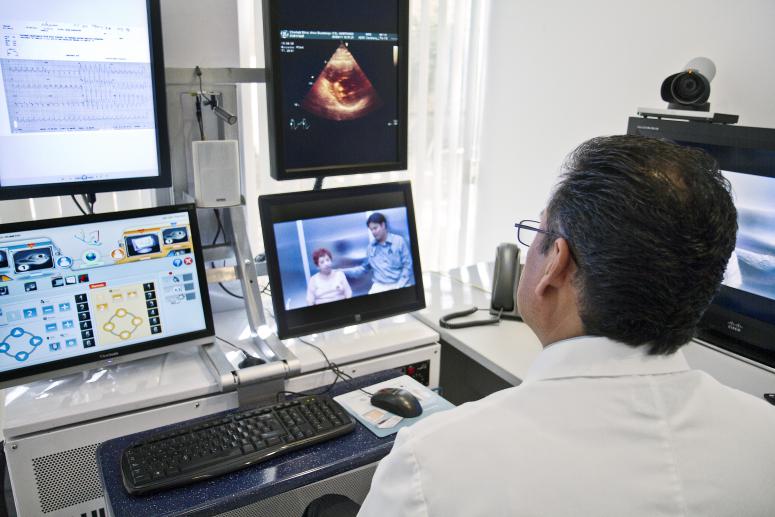
The health care system is rooted in connection, experience, and trust between a provider and patient. This is the second post in a series highlighting eight studies, managed by AcademyHealth and funded by the Robert Wood Johnson Foundation, which focus on trust and mutual respect. The first post in the series focused on the relationship between African American men and their health care providers in light of COVID-19. This post will highlight two studies’ work on technology’s role in supporting mental health services.
Mental and behavioral health care services are inherently relationship-based, and perhaps the most critical challenge that providers face is developing trusting relationships with the people they serve. Co-PIs Marek Posard and Ritika Chaturvedi from the RAND Corporation are exploring how bonds of trust are built in telemedicine mental health services. Their goal is to better understand how effective provider/patient relationships can be built in all telehealth services. The team at Pressley Ridge, led by Michael Valenti and Amy Strickler, are examining the effectiveness of a mobile app that facilitates real-time dialogue between patients and providers in order to build trust and inform practice that improves health outcomes for those with mental or behavioral health problems.
In the midst of COVID-19, national and international stay-at-home orders have rapidly increased telemedicine in all facets of health care. Many services and programs that are typically face-to-face have transitioned into a virtual world. Both providers and patients have to adapt to the changing climate quickly and without warning.
“Those [health care providers] that were not prepared are scrambling to figure out how to provide uninterrupted access to care while simultaneously altering services so they are appropriate for remote delivery,” said Valenti. “This transition often leads to confusion and frustration on behalf of both direct care providers and clients alike.”
The researchers emphasize the importance of open communication and collaboration between the provider and their patient during a time where many people are struggling physically, emotionally, and economically.
Posard and Chaturvedi preliminary findings suggest that the perception of trust in telemedicine is strongly linked to past experiences within the health care system, independent from the telemedicine modality.
“This suggests to us that a key barrier to trust has more to do with the structure of the U.S. health care system than telemedicine technology or the individual provider,” said Posard.
Beyond past health care experiences, the RAND team is preliminary findings suggest that racial biases may also play a role in undermining a trusting relationship between patient and provider. Among individuals looking to place blame on China for the pandemic, COVID-19 has surfaced prejudices against the Asian American community, including health care providers. The researchers found some evidence that survey respondents who guessed that a fictitious provider in their study was Asian were more likely to expect to distrust this provider and less likely to expect to trust this provider. The researchers plan to explore this finding further.
Although the widespread use of telemedicine is evolving, Valenti states that many health care providers already use technology to engage their community, whether it is via text, email, or social media.
“These technologies provide more access points between service providers and clients,” said Valenti. “The increase in touchpoints provided by technology offers advancement in how we communicate with those we serve, and how often.”
In this new health care environment, providers can leverage the advantages of technology to form and perhaps even strengthen trusting relationships with their patients.